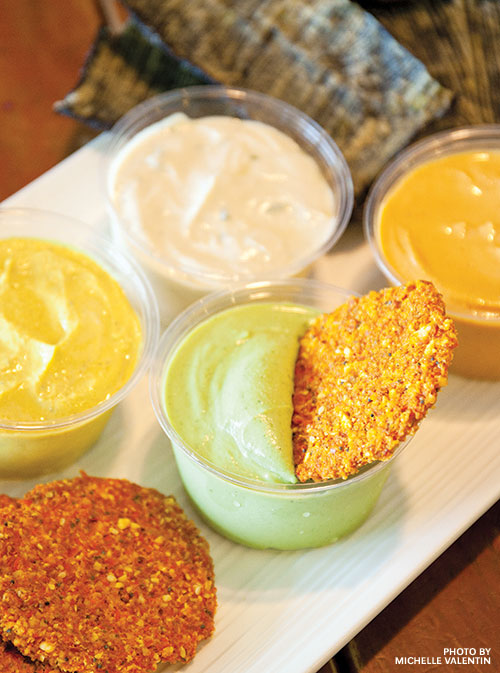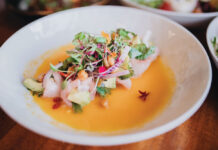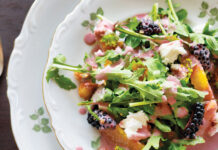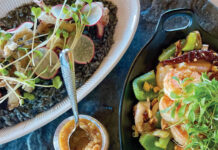
Such support is invaluable for fledgling entrepreneurs, and MAP offers it for a bargain: just $300 for an eight-week course. So far, the Food Innovation Center has hosted two MAP cohorts of twelve participants each. Fordyce belonged to the second cohort. Over eight Monday evenings, she attended presentations by faculty and guest experts, such as Arnie Koss, creator of Earth’s Best organic baby foods; Mark Ausbeck, consulting engineer with Innovate Hawaii; and retired Nestlé executive Helmut Traitler.
The program allows food industry veterans to offer insights into branding, packaging, financing, distribution, and customer relations. Sessions culminate in a pitch night: each entrepreneur presents her product to a panel of judges and potential investors. The top three pitches each receive $5,000.
Taro farmer Lani Eckart-Dodd gave one of the winning pitches. She plans to popularize poi in single-serve pouches, marketing it to everyone from athletes to babies. Another winner, Dawn Anderson, produces B Raw bars — high quality energy bars sold in several Maui groceries. Speere and Ausbeck analyzed her production cycle to identify inefficiencies. She demonstrated the steps: mix ingredients, pour into molds, freeze, trim frozen bars to size, package, and seal. Ausbeck suggested that she cut out the time-consuming trim by investing in custom-sized silicone molds. Speere sourced a manufacturer for the molds, helping her increase her efficiency by 50 percent.
On top of the expert advice, MAP participants benefit from collaboration with colleagues. All kinds of cross-pollination occur. “James Simpliciano was in my cohort,” says Fordyce. “He has a greenhouse, so I gave him cucumber seeds.” In the future, Simpliciano might provide the raw material for Waikapū Pickles. The West Side farmer grows a cornucopia of crops, including moringa, an emerging superfood. He’s marketing a nutrient-packed powder made from its leaves.
Fordyce also took advantage of another MAP perk: use of the Laulima Kitchen at UHMC. She and Atay met there to talk strategy with Cory Vicens, the Maui Food Innovation Center’s marketing and communications specialist. Their goal: Get Waikapū Pickles into Whole Foods. Infiltrating the gourmet grocery chain is so complex — and potentially lucrative —that people have posted instructional videos on YouTube.
Whole Foods is the yardstick for many small-scale food producers; each aspect of their business must comply with exacting standards. For example: products must be individually marked with food-safety registration numbers that allow the FDA to track each item in the event of a health emergency.
Fordyce appreciates the stringency. Producing food is “a huge liability,” she says. “Pickling and fermenting in particular.” The Whole Foods application forced her to do her homework. Now she and Atay are ready for the final step: third-party evaluation of their production process. They’re lucky to have Vicens as a coach; her background is in quality control and manufacturing. Vicens helped them diagram their cutting and brining workstations and recommended that they face one another, which improves efficiency.
The Pilina Building’s kitchen, past home of UHMC’s culinary arts program and campus cafeteria, is actually the genesis of the Maui Food Innovation Center. In 2011, the State approved funds to turn it into a high-tech food production facility. A rural-development study showed that to optimize its use, people would need training. The Food Innovation Center formed to meet this need, and began offering courses in food safety and manufacturing in 2014. But it was launching MAP that gave the center momentum, says Speere. “That’s when we really started to touch our local food entrepreneurs.”





